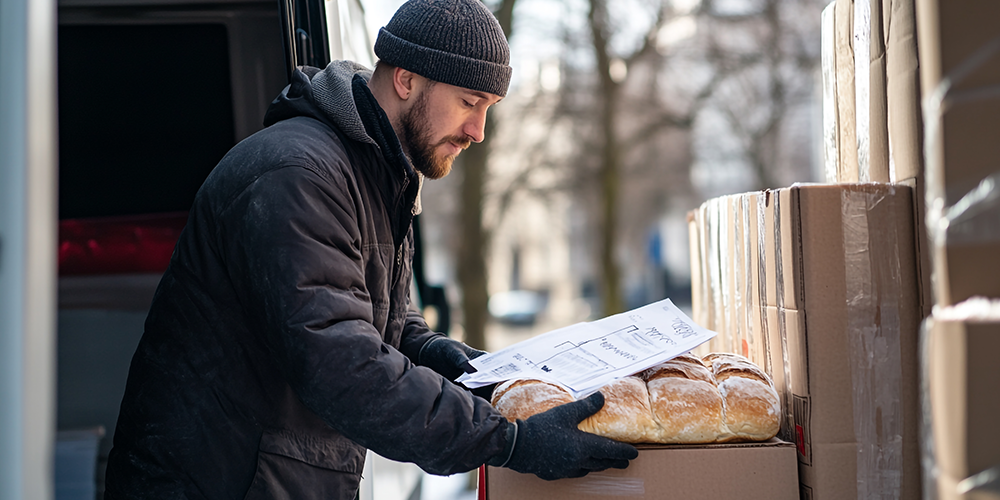Integrated Labels vs. Packing Slips: What Speeds Up Fulfillment?

Integrated labels save time by combining two tasks into one—printing your shipping label and packing slip on a single sheet. If your fulfillment team is still matching documents manually, there's a faster, cleaner way to work.
Let’s walk through how integrated labels compare to traditional packing slips and where they make the biggest impact in day-to-day operations.
Integrated Labels vs. Packing Slips: Quick Comparison
| Feature | Integrated Labels | Packing Slips |
|---|---|---|
| Printing Process | Combined (1 sheet) | Separate documents |
| Time Efficiency | Faster | Slower due to sorting |
| Error Reduction | Lower chance of mismatch | Higher with manual pairing |
| Cost | Slightly higher per sheet | Lower, but adds labor |
| Best for | E-commerce, 3PL, volume | Custom or low-volume orders |
| Software Compatibility | Shopify, ShipStation, etc. | Universal |
| Environmental Impact | Uses fewer sheets | More paper use |
Why Integrated Labels Are Designed for Speed
With integrated labels, your packing slip and shipping label are printed at once. No matching, sorting, or double-checking. The peel-off label goes on the box, the rest stays with the order.
This setup reduces:
- Time spent handling separate documents
- The chance of shipping errors from mismatched slips
- Paper clutter and backtracking in high-volume settings
Many growing e-commerce brands report cutting 15–30 seconds per order after switching—across 300+ orders a day, that adds up to serious saved time.
What Slows Down the Packing Slip Workflow
Packing slips on their own aren’t the issue—it’s the extra steps they require:
- Print shipping labels from one system, packing slips from another
- Match them manually for each order
- Keep track of two separate piles
- Double-check accuracy before sealing the box
For low volume or highly customized orders, that might work. But when speed, consistency, and accuracy matter, these steps can bottleneck the process.
Use Cases Where Integrated Labels Win
- E-commerce shipping: Teams can pick, pack, and ship in one smooth motion with fewer touchpoints. Print, peel, label, done.
- Subscription boxes or high-volume drops: When hundreds of identical or similar orders are going out daily, integrated labels minimize the chances of mismatch or slowdowns.
- Third-party logistics (3PL): Fewer handling errors and faster handoffs between picking and packing teams.
- Multi-channel sellers: When integrating with tools like ShipStation, Shopify, or Pirate Ship, integrated labels align with most automated workflows.
What to Consider Before Switching
- Printer compatibility: Most integrated label formats work with standard laser or inkjet printers.
- Software setup: Platforms like ShipStation and Shopify already support integrated label templates—check before you start.
- Label format: Choose formats where the label portion aligns with your shipping software’s print zones. You can find templates here (non-competitor).
Tip: Always test print before committing to a new layout. A 30-minute setup now saves hours later.
Looking to Streamline Your Shipping Station?
If your fulfillment team is juggling packing slips and shipping labels separately, integrated labels could make your workflow cleaner, faster, and easier to manage.
We offer a full range of integrated labels that work with most major platforms and printers. If you’re not sure which format is the right fit, we’re here to help you figure it out.
Frequently Asked Questions
Are integrated labels compatible with all shipping platforms?
Most platforms like ShipStation, Shopify, and Pirate Ship support integrated label templates. Just make sure the format matches your template setup.
Can I print integrated labels with a regular printer?
Yes—most integrated labels are designed for standard inkjet or laser printers. You don’t need special equipment to use them.
Do integrated labels help reduce packing errors?
Absolutely. Since the shipping label and packing slip print together, there’s less room for mix-ups between orders.
How much time do integrated labels really save?
Fulfillment teams report saving 15–30 seconds per order. For 100+ orders a day, that’s 25–50 minutes reclaimed.
Are integrated labels more expensive than separate slips and labels?
Per sheet, they might cost a little more—but the time saved in labor, reduced reprints, and fewer errors often makes them the more cost-effective choice.












